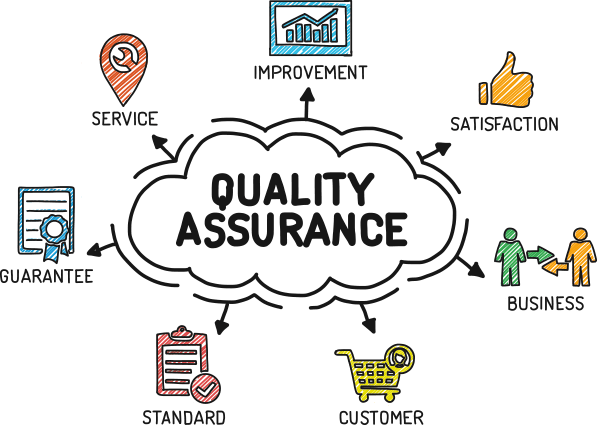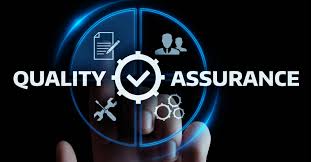Quality Assurance DefinitionQuality assurance (QA) is a crucial process for ensuring that a product or service meets the desired level of quality. It involves implementing processes, procedures, and standards to ensure that a product or service is consistent, reliable, and meets customers' expectations. Quality assurance is an essential part of any organization that wants to deliver high-quality products or services consistently. In this article, we will explore the definition of quality assurance, its importance, and the steps involved in the quality assurance process. What is Quality Assurance?Quality assurance is a collection of processes and procedures to guarantee that a product or service reaches the intended level of quality. It entails implementing quality control techniques and establishing quality standards to guarantee that the product or service satisfies the client's needs. Quality assurance is a proactive process designed to prevent defects and ensure that products or services meet the highest quality standards. Quality assurance is not just about testing and ensuring that products or services meet certain specifications. It involves a comprehensive approach that includes the identification of customer needs, the establishment of quality standards, the implementation of quality control procedures, and the continuous monitoring of quality. Quality assurance is a continuous process that is designed to improve the overall quality of a product or service and ensure that it meets the changing needs of customers. 
Importance of Quality AssuranceQuality assurance is critical for several reasons. For starters, it assures that products or services are of the desired quality. This, in turn, leads to client happiness, which is essential for any business's success. Consumers are more inclined to return to a company that continuously providing high-quality items or services. Additionally, customers are more likely to recommend a business that delivers high-quality products or services to their friends and family. Second, quality assurance helps businesses to reduce costs. When products or services are of high quality, there are fewer defects and fewer customer complaints. This, in turn, reduces the cost of rework and repair, which can be significant. Additionally, when products or services are of high quality, there are fewer returns, which can also save businesses money. Third, quality assurance is essential for regulatory compliance. Many industries have regulations and standards that must be followed to ensure the safety and quality of products or services. Quality assurance helps businesses to comply with these regulations and standards, which can prevent fines and legal action. Fourth, quality assurance helps businesses to improve their processes and procedures continuously. Quality assurance involves the identification of problems and the implementation of solutions to prevent them from occurring again in the future. This, in turn, leads to process improvement and increased efficiency, which can save businesses time and money. Finally, quality assurance is essential for building trust with customers. Customers who trust a business to deliver high-quality products or services consistently are likelier to become loyal customers. Customers loyal to a company are more likely to make repeat purchases and suggest them to others, leading to higher revenue and growth. 
Steps Involve in the Quality Assurance ProcessVerifying that a product or service reaches the intended level of quality is known as quality assurance. It involves a comprehensive approach that includes the identification of customer needs, the establishment of quality standards, the implementation of quality control procedures, and the continuous monitoring of quality. Now, we will explore the steps involved in the quality assurance process. Step 1: Planning The first step in the quality assurance process is planning. This involves identifying the customer's needs, establishing quality standards, and developing a plan to meet those standards. During the planning phase, businesses should:
Step 2: Implementation The second step in the quality assurance process is implementation. This involves implementing quality control procedures to ensure products or services meet the established quality standards. During the implementation phase, businesses should:
Step 3: Assessment The third step in the quality assurance process is assessment. This involves assessing the quality of products or services to ensure that they meet the established quality standards. During the assessment phase, businesses should:
Step 4: Improvement The fourth step in the quality assurance process is an improvement. This involves the identification of problems and the implementation of solutions to prevent them from occurring again in the future. During the improvement phase, businesses should: The improvement process in quality assurance involves a cycle of continuous improvement, often called the Plan-Do-Check-Act (PDCA) cycle. This cycle is based on iterative improvement, where changes are made gradually and tested before fully implemented. The PDCA cycle consists of four main steps:
ConclusionQuality assurance aims to ensure that a product or service is fit for its intended purpose and meets or exceeds customer expectations. This requires a thorough understanding of customer needs and expectations, as well as an understanding of the product or service being offered. Quality assurance involves a range of activities, including planning, implementation, testing, and monitoring, to ensure that a product or service meets the desired level of quality. One of the key principles of quality assurance is the use of standards and guidelines. Standards provide a framework for ensuring that products or services meet specific requirements and quality criteria. They are often developed by industry associations or regulatory bodies and may be mandatory or voluntary. Guidelines provide recommendations for best practices and approach to quality assurance. They may be developed by industry experts or professional organizations to help organizations improve their processes and systems.
Next TopicWater Definition
|
 For Videos Join Our Youtube Channel: Join Now
For Videos Join Our Youtube Channel: Join Now
Feedback
- Send your Feedback to [email protected]
Help Others, Please Share










